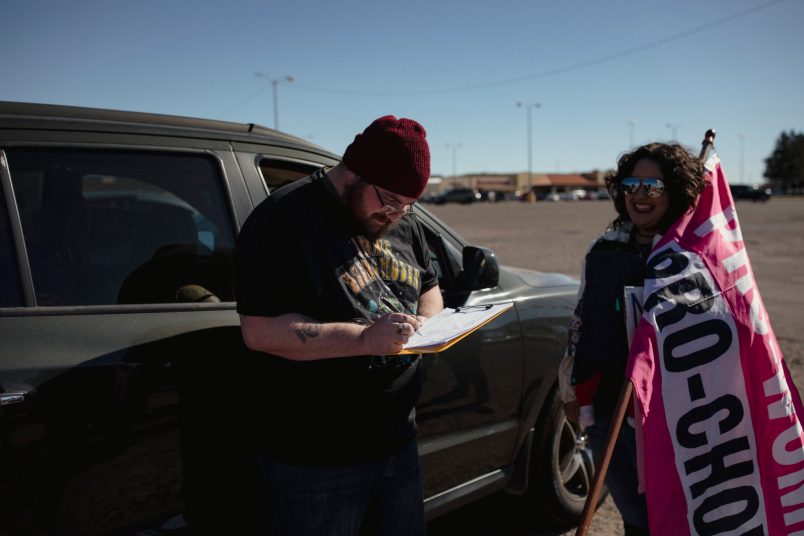Ohio groups filed the text of their proposed ballot initiative Tuesday, aiming to enshrine the right to abortion in the state’s constitution.
They filed “The Right to Reproductive Freedom with Protections for Health and Safety” with Ohio Attorney General Dave Yost (R), hoping to put it to a vote later this year.
“Every individual has a right to make and carry out one’s own reproductive decisions, including but not limited to decisions on contraception, fertility treatment, continuing one’s own pregnancy, miscarriage care, and abortion,” the text reads.
“The State shall not, directly or indirectly, burden, penalize, prohibit, interfere with, or discriminate against either an individual’s voluntary exercise of this right or a person or entity that assists an individual exercising this right, unless the State demonstrates that it is using the least restrictive means to advance the individual’s health in accordance with widely accepted and evidence-based standards of care,” it continues.
The initiative would allow for abortion to be prohibited after fetal viability, but not if a physician determines that the procedure is necessary to “protect the pregnant patient’s life or health.”
Two of the groups behind ballot initiative pushes — Protect Choice Ohio, created by Ohio Physicians for Reproductive Rights, and Ohioans for Reproductive Freedom, made up of groups including Planned Parenthood Advocates of Ohio — joined together last week to streamline the effort.
The former group was intent on getting the initiative on the ballot in 2023 from the outset.
“In 2023, we have nothing else going on,” Dr. Marcella Azevedo of Protect Choice Ohio told TPM in a recent interview. “Money-wise, it’s gonna be cheaper for a lot more resources.”
“It’s also sooner so people don’t get hurt,” she said, comparing the human cost of waiting until 2024. “To add to all those benefits, if somehow we don’t collect enough signatures, they don’t expire — so none of the work we have done has gone away.”
“All the resources would be focused on Ohio in 2023, since it’s the only show in town,” added Leo Jennings, a consultant working with the group. “They’ll be fragmented across the entire nation in 2024.” Many states are mulling or preparing abortion-related ballot initiative pushes of their own for the presidential election year.
The Ohio groups are reading the signs after 2022, when voters in states as politically diverse as Kansas, Kentucky, California, Vermont and Michigan all chose abortion access — or at least, voted against restriction.
And abortion access in Ohio is extremely tenuous. Ohio Gov. Mike DeWine (R) signed a law in 2019 that would ban nearly every abortion in the state, but it’s currently being blocked by a judge in the Hamilton County Common Pleas Court. The 2022 election only made the Ohio Supreme Court more conservative, leaving the ballot initiative as the last path to access for the foreseeable future.
“After the election and after the Republican gains on the state Supreme Court, it’s probably not a place we can count on,” Deputy Director of Pro-Choice Ohio Jaime Miracle told TPM.
There are many steps left for the initiative to make it onto the ballot: Yost must next decide whether the text is “fair and truthful,” the Ohio Ballot Board will decide whether it needs to be split into separate amendments, the advocates will start collecting the required 413,446 signatures from 44 counties, which are due by July 5.
Azevedo told TPM they’re gunning for around 800,000 signatures to make sure they have plenty of buffer. For advocates, this effort is existential.
“We expect not too far into the future to lose access to abortion altogether,” she said.



